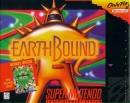I think we are confusing two different frame rates here.
Film consists of a series of still images that are stringed together in order to create an illusion of movement. Back in the day when filming became a thing, it was determined that for one second of moving image, you will need 24 consecutive images so that the end result will look realistic to the human eye. So 24 frames per second. If you reduce those frames per second, the movement will become choppy and jumpy. This is seen in animation as well, if you want fluid and beautiful movement, you have to draw 24 images with very gradual change to depict one second of moving footage. It used to be very painstaking work for Disney animators in the days before computers..
Then there's the other frame rate that we know best from gaming, where it's more about how fast the processor is able to run everything so that there's no slowdown in whatever is happening on screen. I'm very bad at explaining this, but there you go. I don't think those two are one and the same. In TV and film it's more about a choice when going for realism, it's not like there's a problem with processing power in the cameras like there is in gaming and processors many times. Maybe it comes into play somehow when streaming, I haven't tried it in 4K yet.
Anyways, I don't know what they precisely did with The Hobbit movies to alter the frame thingy from the normal 24, but it made it look more like home video or "making of" footage than the usual cinematic experience. It's weird. I didn't like it, but I kind of got used to it after a while. No clue how it made anything better, though.


























































